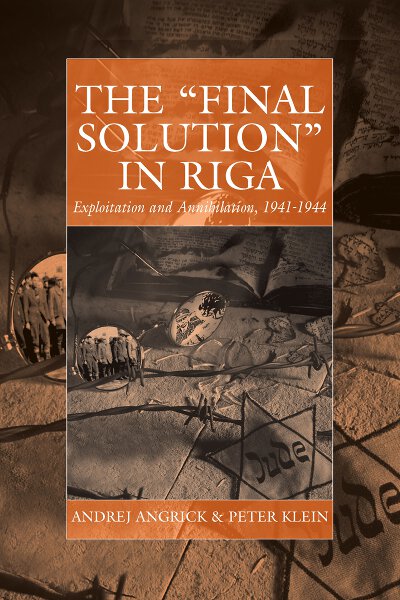
Series
Volume 13
War and Genocide
See Related
History JournalsEmail Newsletters
Sign up for our email newsletters to get customized updates on new Berghahn publications.
The Train Journey
Transit, Captivity, and Witnessing in the Holocaust
Simone Gigliotti
Full Text PDF | Full Text ePUB Made available under a CC BY-NC-ND 4.0 license with support from Knowledge Unlatched.
254 pages, 20 illus., bibliog., index
ISBN 978-1-57181-268-1 $135.00/£99.00 / Hb / Published (July 2009)
ISBN 978-1-84545-785-3 $19.95/£15.95 / Pb / Published (October 2010)
NOMINATED FOR THE RAPHAEL LEMKIN AWARD BY THE INSTITUTE FOR THE STUDY OF GENOCIDE
Reviews
“…an important and, at times, harrowing book. By tackling a much-neglected topic and giving the deportees a voice in her use and analysis of their testimonies, the author does indeed succeed in finding ‘a place for them in the history of victims suffering during the Holocaust’.” · Journal of Contemporary History
“Gigliotti advances an original and provocative thesis that offers a fresh insight into the unfolding of Nazi genocide, and makes an intriguing case for the trains as ‘mobile chambers of death’ in themselves (122), and as ‘a prologue for the rigors of the camp world’.” · European History Quarterly
Description
Deportations by train were critical in the Nazis’ genocidal vision of the “Final Solution of the Jewish Question.” Historians have estimated that between 1941 and 1944 up to three million Jews were transported to their deaths in concentration and extermination camps. In his writings on the “Final Solution,” Raul Hilberg pondered the role of trains: “How can railways be regarded as anything more than physical equipment that was used, when the time came, to transport the Jews from various cities to shooting grounds and gas chambers in Eastern Europe?” This book explores the question by analyzing the victims’ experiences at each stage of forced relocation: the round-ups and departures from the ghettos, the captivity in trains, and finally, the arrival at the camps. Utilizing a variety of published memoirs and unpublished testimonies, the book argues that victims experienced the train journeys as mobile chambers, comparable in importance to the more studied, fixed locations of persecution, such as ghettos and camps.
Simone Gigliotti is Senior Lecturer in History at Victoria University, Wellington, New Zealand. Previously, she held a Charles H. Revson Fellowship at the Center for Advanced Holocaust Studies at the U.S. Holocaust Memorial Museum. Among other publications, she is the co-editor of The Holocaust: A Reader (Blackwell Publishing).
Subject: History: World War IIGenocide HistoryMemory StudiesTransport Studies
Area: GermanyCentral/Eastern Europe
The Train Journey by Simone Gigliotti is available open access under a Creative Commons Attribution-NonCommercial-NoDerivatives 4.0 International License (CC BY-NC-ND 4.0) with support from Knowledge Unlatched.
Full Text PDF | Full Text ePUB
OA ISBN: 978-1-78533-477-1




